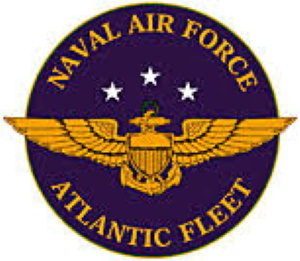 |
COMNAVAIRLANT
Commander Naval Air Force Atlantic Fleet March 1974-May 1976 Last Updated: July 23rd, 2022 |
There is a problem with the text in some sections in that it was not properly transmitted from the Sea Monkey composer software to the online version
using the File Transfer Protocol software. I'll have to work on that!
Gas Shortage
 |
When we arrived in Norfolk 1n 1974, there were also long gas lines at gas stations. |
COMNAVAIRLANT (aka CNAL, aka Airlant) is located at Naval Air Station Norfolk in the left center of the map.
 |
We found a house we rented in Kempsville which was located about half way betewen NAS Norfolk and Virginia Beach.
 |
I don't remember who Bosco stayed with while we were in England; probably my parents, possibly Mary's parents) |
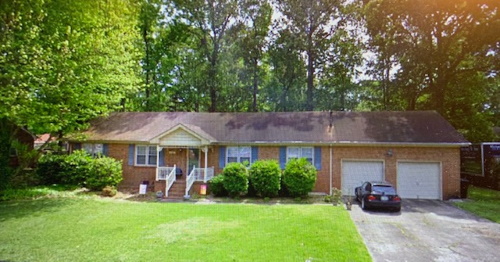 |
5305 Fairfield Blvd. Kempsville 2000 sq. ft., 3 bedrooms, 2 baths, and a room over the garage |
 |
It was located on a very nice street with lots of trees. Heather (almost 10) and Laura (then 9) went to a nice elementary school. Stacy (then 4) stayed at home with Mary and Bosco. |
A7 Class Desk Officer (March 1974-December 1974)
My first
assignment at CNAL was as the A7 Class Desk Officer (Code
521B). Airlant consisted of various sections devoted to
administration, aircraft training operations, supply
(logistics), and engineering/maintenance. The Code 50
section was headed by Rear Admiral Faulders. The Code 52
section was responsible for aircraft engineering and
maintenance, airborne weapons, and electronic warfare systems
and was headed by a Captain who was an Aeronautical
Engineering Duty Officer (AEDO). When I was there, Captain
Bill Finneran was in charge of Code 52. My boss, Code 521, CDR
Jim Anderson also an NAEDO, was in charge of aircraft
engineering and maintenance for the type aircraft assigned to
Airlant. My job as Code 521B was to oversee the
engineering and maintenance aspects of the A7s assigned to
squadrons assigned at NAS Cecil Field in Jacksonville. Other
officers were responsible for the A6, F4, E2 etc aircraft
assigned on the east coast. There was a similar
arrangement at COMVAVAIRPAC on the west coast. Most of
the officers assigned to Code 521 jobs were also NAEDOs. It
was unusual for me as a pilot (Line Officer/1310) to be
assigned to this job but I think my experience as an Aircraft
Division Officer in VA-15 and as Maintenance Officer in VA-82
was most likely the reason I found myself in 521B. One
of my best friends at AIRLANT, was the A6 Class Desk Officer,
LCDR Chuck Boehmer. He was a Naval Flight Officer/A6 BN
(Bombadier Navigator) with aircraft maintenance experience.
I was very fortunate to have a GS-13 civilian, Jim McConnel, assigned with me as part of 521B. Jim was a veteran of WW2 and was very experienced in the engineering and maintenance history of the A7. I could not have accomplished my job without the guidance and support of Jim McConnell.
The most important part of our job was to review the aircraft and engine change proposals that were produced by Commander Naval Air Systems Command (COMNAVAIRSYSCOM) that were intended to either accomplish upgrades or fix problems that were the result of accidents or incidents experienced by the operational A7 squadrons. Jim usually reviewed the technical aspects of the changes. My job was to look at the changes and determine whether they were within the capability of the squadrons to accomplish onboard ship at sea or were going to be restricted to be done while based at Cecil Field. My experience as a squadron maintenance officer was invaluable in this regard. Another factor that was a plus was that I was an experienced A7 pilot and was post maintenance flight test qualified.
I did fly as much as possible while at Airlant. I was required to get my instrument card renewed which meant some TA-4 flights with VF-43 at Oceana or VA-45 at Cecil. I was also flew as much as I could with VA-174 and the fleet A7 squadrons. These flights were helpful in doing my job as the A7 Class Desk Officer. Flying with the A7 squadrons at Cecil helped me the understand better their problems and how well they thought we at Airlant were doing our job; or not.
March 1974- I flew three flights (5.9 hours); two instrument flights in the TA4 with VF-43 at Oceana and a flight in the YA-7H (a pre-production model of the two seat A7). Trips to LTV in Texas was an important part of my job. First, I got the chance to see the A7 manufacturing process. And second, I was able to establish relationships with the engineers and maintenance experts at the company.
April 1974- I flew 7 flights (15.5 hours); first an instrument flight in a TA4 with VF-43; followed by a five day trip to Cecil. I flew in a VA-45 TA4 from Norfolk to Cecil (with Possum), a second flight with Possum in a VA-45 TA4, an A7 NATOPS check flight with VA-174 (Jim Yeager), an A7 systems flight with VA-105, an A7 live weapons flight with VA-37, and an TA4 instrument flight with VA-45 back to Norfolk. These five days were fun and valuable. I got back to flying the A7, spent time with old friends, and spent valuable time with maintenance folks from VA-174 and the fleet squadrons.
June 1974- I flew 4 flights (8.0 flight hours); Two TA4 flights with VA-465 at Cecil and two A7E flights with VA-105 at Cecil
July 1974- I flew 4 Flights (8.6 flight hours); Two TA4 flights with VA-45, one A7E flight with VA-66 and one A7E flight with VA-174. That flight was a formation flight with my wingman from VA-82; Jim Yeager. It was great spending some time and flying with "Rock" again !
August 1974- I flew three flights (5.7 flight hours); Tow TA4 flights with VA-45 and one A7E flight with VA-105
September 1974- I flew six flights (10.6 flight hours); Two TA4 flights with VA-45 and four A7B/E flights (VA-105, VA-46, and two with VA-37)
October 1974- I flew two four flights (8.3 flight hours); Two TA4 flights and two A7B/E flights (VA-174 and VA-46)
November 1974- I flew four flights (9.3 flight hours);, Two TA4 flights (one with VF-43 and one with VA-43) and two A7C flights with VA-82
My day usually started at about 7:30 with a cup of coffee, review the daily message board, and discussing anything I needed to with Jim McConnel . I needed to identify an A7 related issues that mighty come up in the 0900 daily meeting with Vice Admiral Michaelis, COMNAVAIRLANT or the Chief of Staff. I was required to brief Jim Anderson who would brief Captain Finneran who would brief Rear Admiral Faulders before the meeting. Ocassionally, I would attend the meeting if there was a significant A7 related issue.
Once we were finished with preparing for the morning meeting, Jim McConnell and I were free to address whatever engineering change proposal or maintenance procedure changes we were working on at the time. Some of these issues were fixes for accidents or incidents experienced in the fleet for changing out the main landing gear trunion bolts with stronger steel. There had been a few failures on arrested landings. That one could be accomplished onboard the ship.
After several inadvertent extensions of the nose landing gear during 4 G pullouts after bomb runs, we had to change out the nose landing gear uplocks and the nose gear housing itself from steel to titanium. This was a major affair that required teams to be organized, repair sets to be prioritized and could not be done onboard ship. Another major issue we addressed was the failure of the A7E TF-41 engine turbine. It was finally resolved when it was discovered that the turbine shield which was removed during depot level engine maintenence was not replaced properly. It took some time to discover the source of the problem. In the meantime as, the Navy couldn't afford to down the A7 fleet, the pilots had to run up to full power and hold the brakes for one minute prior to a cat shot or starting the take off roll; not a very encouraging situation for new pilots undergoing training at VA-174. We even experimented with flying the aircraft without the turbine shield. Test pilots flew some of these to failure and then ejected safely.
Milestone Management. Another function of Code 521 was to provide an officer for the COMNAVAIRLANT Aircraft Carrier Overhaul Milestone Management Team. This team monitored critical path milestones during an aircraft carrier overhaul and briefed the Admiral advised of any problem areas and worked to provide solutions to problems to ensure that the overhaul was completed on time. This was a complex and challenging procedure. I learned a great deal during my assignment to one of these teams. Apparently, I did a good job because I was selected to take on the the modification of the USS Roosevelt to accommodate USMC AV8B Harrier aircraft.
USMC AV8B Harrier squadron workup and deployment on the USS Roosevelt CVA-42. In June of 1974, the Chief of Naval Operations, Admiral James L. Holloway III, announced that the Roosevelt would work up and deploy with a 16 plane squadron of vertical lift-off and landing AV8B Harriers.
Commander Naval Sea Systems Command and Commander Naval Air Systems Command were tasked to make it happen. COMNAVAIRLANT was tasked to monitor the critical path milestones involved. I was assigned to monitor the Roosevelt's modifications required to accommodate the AV-8B aircraft. Some of the more challenging problems were to determine what flight deck material requirements including the elevator at the end of the angle deck were required and how to solve radiation hazzards involved with the Harrier's Aden 30mm gun. Unfortunately, some bureaucratic types in the NAVAIR organizations thought he idea foolish and made getting modifications completed on time difficult. Fortunately, CNO had issued a message at the start of the summer that he wanted to be informed imediately of anything or anyone who was getting in the way of completing the modifications by the goal date of September. NAVAIR engineers determined that the steel required be applied to protect Roosevelt's flight deck would be too heavy to move the elevator up and down. My position was that a heavy coating of "non skid" would be sufficient. It turned out that my position was correct and the Roosevelt deployed with enough non skid to protect the deck open deployment.
The Aden 30 MM Gun Saga. The NAVAIR position was that it was too dangerous to deploy with the Aden 30mm guns as it was no HADHAZ safe (Radiation Hazzards from the ship's radars) on the flight deck. I was present at a meeting at NAVAIR when this position was presented. It thought it was rediculous to tell the Marines that they couldn't use their Aden 30mm gun; It's most effective armament. I held a copy of CNO's message up and asked the names of the people who I should name as standing in the way of deploying the 30mm gun. Noone stood up. In the end, we came up with away to load the 330mm gun pods withing the hull of the ship and then bring them up to the flight deck as an all up round. This solution worked although we had to cut a hole in the side of the ship to test fire the gun from below decks.
Athletic Activities
I was very fortunate to have a GS-13 civilian, Jim McConnel, assigned with me as part of 521B. Jim was a veteran of WW2 and was very experienced in the engineering and maintenance history of the A7. I could not have accomplished my job without the guidance and support of Jim McConnell.
The most important part of our job was to review the aircraft and engine change proposals that were produced by Commander Naval Air Systems Command (COMNAVAIRSYSCOM) that were intended to either accomplish upgrades or fix problems that were the result of accidents or incidents experienced by the operational A7 squadrons. Jim usually reviewed the technical aspects of the changes. My job was to look at the changes and determine whether they were within the capability of the squadrons to accomplish onboard ship at sea or were going to be restricted to be done while based at Cecil Field. My experience as a squadron maintenance officer was invaluable in this regard. Another factor that was a plus was that I was an experienced A7 pilot and was post maintenance flight test qualified.
Flight Time as
the A7 Class Desk Officer
I did fly as much as possible while at Airlant. I was required to get my instrument card renewed which meant some TA-4 flights with VF-43 at Oceana or VA-45 at Cecil. I was also flew as much as I could with VA-174 and the fleet A7 squadrons. These flights were helpful in doing my job as the A7 Class Desk Officer. Flying with the A7 squadrons at Cecil helped me the understand better their problems and how well they thought we at Airlant were doing our job; or not.
March 1974- I flew three flights (5.9 hours); two instrument flights in the TA4 with VF-43 at Oceana and a flight in the YA-7H (a pre-production model of the two seat A7). Trips to LTV in Texas was an important part of my job. First, I got the chance to see the A7 manufacturing process. And second, I was able to establish relationships with the engineers and maintenance experts at the company.
April 1974- I flew 7 flights (15.5 hours); first an instrument flight in a TA4 with VF-43; followed by a five day trip to Cecil. I flew in a VA-45 TA4 from Norfolk to Cecil (with Possum), a second flight with Possum in a VA-45 TA4, an A7 NATOPS check flight with VA-174 (Jim Yeager), an A7 systems flight with VA-105, an A7 live weapons flight with VA-37, and an TA4 instrument flight with VA-45 back to Norfolk. These five days were fun and valuable. I got back to flying the A7, spent time with old friends, and spent valuable time with maintenance folks from VA-174 and the fleet squadrons.
June 1974- I flew 4 flights (8.0 flight hours); Two TA4 flights with VA-465 at Cecil and two A7E flights with VA-105 at Cecil
July 1974- I flew 4 Flights (8.6 flight hours); Two TA4 flights with VA-45, one A7E flight with VA-66 and one A7E flight with VA-174. That flight was a formation flight with my wingman from VA-82; Jim Yeager. It was great spending some time and flying with "Rock" again !
August 1974- I flew three flights (5.7 flight hours); Tow TA4 flights with VA-45 and one A7E flight with VA-105
September 1974- I flew six flights (10.6 flight hours); Two TA4 flights with VA-45 and four A7B/E flights (VA-105, VA-46, and two with VA-37)
October 1974- I flew two four flights (8.3 flight hours); Two TA4 flights and two A7B/E flights (VA-174 and VA-46)
November 1974- I flew four flights (9.3 flight hours);, Two TA4 flights (one with VF-43 and one with VA-43) and two A7C flights with VA-82
A7 Class Desk Significant Issues
My day usually started at about 7:30 with a cup of coffee, review the daily message board, and discussing anything I needed to with Jim McConnel . I needed to identify an A7 related issues that mighty come up in the 0900 daily meeting with Vice Admiral Michaelis, COMNAVAIRLANT or the Chief of Staff. I was required to brief Jim Anderson who would brief Captain Finneran who would brief Rear Admiral Faulders before the meeting. Ocassionally, I would attend the meeting if there was a significant A7 related issue.
Once we were finished with preparing for the morning meeting, Jim McConnell and I were free to address whatever engineering change proposal or maintenance procedure changes we were working on at the time. Some of these issues were fixes for accidents or incidents experienced in the fleet for changing out the main landing gear trunion bolts with stronger steel. There had been a few failures on arrested landings. That one could be accomplished onboard the ship.
After several inadvertent extensions of the nose landing gear during 4 G pullouts after bomb runs, we had to change out the nose landing gear uplocks and the nose gear housing itself from steel to titanium. This was a major affair that required teams to be organized, repair sets to be prioritized and could not be done onboard ship. Another major issue we addressed was the failure of the A7E TF-41 engine turbine. It was finally resolved when it was discovered that the turbine shield which was removed during depot level engine maintenence was not replaced properly. It took some time to discover the source of the problem. In the meantime as, the Navy couldn't afford to down the A7 fleet, the pilots had to run up to full power and hold the brakes for one minute prior to a cat shot or starting the take off roll; not a very encouraging situation for new pilots undergoing training at VA-174. We even experimented with flying the aircraft without the turbine shield. Test pilots flew some of these to failure and then ejected safely.
Milestone Management. Another function of Code 521 was to provide an officer for the COMNAVAIRLANT Aircraft Carrier Overhaul Milestone Management Team. This team monitored critical path milestones during an aircraft carrier overhaul and briefed the Admiral advised of any problem areas and worked to provide solutions to problems to ensure that the overhaul was completed on time. This was a complex and challenging procedure. I learned a great deal during my assignment to one of these teams. Apparently, I did a good job because I was selected to take on the the modification of the USS Roosevelt to accommodate USMC AV8B Harrier aircraft.
USMC AV8B Harrier squadron workup and deployment on the USS Roosevelt CVA-42. In June of 1974, the Chief of Naval Operations, Admiral James L. Holloway III, announced that the Roosevelt would work up and deploy with a 16 plane squadron of vertical lift-off and landing AV8B Harriers.
Commander Naval Sea Systems Command and Commander Naval Air Systems Command were tasked to make it happen. COMNAVAIRLANT was tasked to monitor the critical path milestones involved. I was assigned to monitor the Roosevelt's modifications required to accommodate the AV-8B aircraft. Some of the more challenging problems were to determine what flight deck material requirements including the elevator at the end of the angle deck were required and how to solve radiation hazzards involved with the Harrier's Aden 30mm gun. Unfortunately, some bureaucratic types in the NAVAIR organizations thought he idea foolish and made getting modifications completed on time difficult. Fortunately, CNO had issued a message at the start of the summer that he wanted to be informed imediately of anything or anyone who was getting in the way of completing the modifications by the goal date of September. NAVAIR engineers determined that the steel required be applied to protect Roosevelt's flight deck would be too heavy to move the elevator up and down. My position was that a heavy coating of "non skid" would be sufficient. It turned out that my position was correct and the Roosevelt deployed with enough non skid to protect the deck open deployment.
The Aden 30 MM Gun Saga. The NAVAIR position was that it was too dangerous to deploy with the Aden 30mm guns as it was no HADHAZ safe (Radiation Hazzards from the ship's radars) on the flight deck. I was present at a meeting at NAVAIR when this position was presented. It thought it was rediculous to tell the Marines that they couldn't use their Aden 30mm gun; It's most effective armament. I held a copy of CNO's message up and asked the names of the people who I should name as standing in the way of deploying the 30mm gun. Noone stood up. In the end, we came up with away to load the 330mm gun pods withing the hull of the ship and then bring them up to the flight deck as an all up round. This solution worked although we had to cut a hole in the side of the ship to test fire the gun from below decks.
Athletic Activities
Tennis-
I was in pretty good physical shape
at the end of my RAF Bracknell tour. My grass court game
was in fine form achieved with matches with the RAF
Bracknell Tennis Team. My schedule at Airlant provided
room for paddle ball or tennis during lunch time and
jogging in the evening. I routinely ran a two mile
circuit from our house in Kempsville. Once a week, I ran
a 11/2 mile course. My goal was to run the 11/2 miles in
under 9 minutes (6 minute miles). I played racquet ball
quite a lot with LCDR Chuck Boehmer one of the NAEDO
officers in 521. He and his wife Judy were one of our
best friends during this tour.
 VADM Michaelis
|
One day, I received a note from Lcdr Kevin Delaney. Aide and Flag Lt for VADM Michaelis, that the Admiral wanted to know if I would be his doubles partner that afternoon. Of course, I said yes. VADM Michaelis was a very serious player and I worked hard to be a strong partner for him. We played often, a once every couple of weeks. I got to know Admiral Michaelis quite well and had the opportunity to meet many of his Navy and civilian friends. One of these Navy friends, VADM Frank Kelso would become Commander Sixth Fleet when I was deployed onboard USS Austin LPD-4 in 1985 and CNO in 1990-1994. Knowing him from the tennis court was very helpful when I got into a bit of a jam when I was CO of the Austin 1in 1985. But, that is a story for another chapter. |
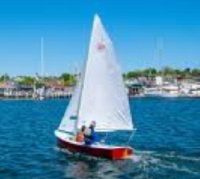 |
The O'day Day Sailor
|
 |
Following up on our positive
experience in sailing during our tour in
England, Laura, Heather and I went shopping for
a sailboat similar to the one we sailed in off
the coast of Cornwall. We found a great deal on
a 17ft O'Day day sailor with a red hull similar
to the one pictured bove. It came with a
mainsail and jib and a trailor to move it
around. It had a small cuddy in the bow area for
storage of sails and related gear. We named her
Anglophile.
 |
We were able to get a mooring for Anglophile at the marina in Willoughby Bay. It was well protected from storms and gave us quick access to the area we intended to do most of our sailing; Hampton Roads inside of the bridge. The tides and currents were tricky in Hampton Roads so we decided to stay inside the bridge so we wouldn't get caught in Chesapeake Bay if the wind died or the current and tide precluded us getting back. |
 |
I did two things to prepare myself for sailing in Hampton Roads. 1. I began attending Power Squadron meetings to learn about boating in the local area. I took and passed their small boat handling course. 2. I got myself a copy of Chapman's Piloting & Seamanship and read and reread it thoroughly. Chapmans became an essential reference for me throughout the rest of my Navy career. |
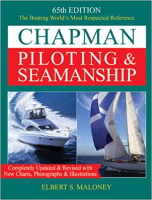 |
The
Sylvester Chumly Affair-The girls and I thoroughly enjoyed
our sailing ventures in Hampton Roads.
We even learned how to almost surf the
Anglophile in waves in the vicinity of the
carrier piers. However, I had one sailing
experience that was a different matter. On
that day, I went sailing with our across the
street neighbor, Cdr. Sylevster
Chumly. Sylvester had never been
sailing. On a beautiful Saturday afternoon,
Sylvester and I loaded up with some
sandwiches and cold beer, found the
Anglophile and headed out into Hampton
Roads. We had lots of wind and a
favorable ebb tide so I decided that it
would be nice to sail through the bridge and
sail around a bit in the Chesapeake.
About mid afternoon though the winds died
and the tide was slack which meant we
wouldn't be able to cross back through the
bridge to our mooring until we had more wind
and a flood tide. So, prepared to stay out
there awhile, we broke out the sandwiches
and beer until the conditions improved. But
they didn't improve. they got worse. By mid
afternoon, nimbus clouds began to move into
the area indicating stormy weather ahead.
About 4:00, I glanced over to the Chesapeake
side of Willoughby Spit and saw a"Dirt
Devil" swirling vertically. We got our life
jackets on and I told Sylvester to lower the
main sail. He managed to get the sail about
halfway down when we were hit by a strong
gust of wind which blew us down; capsized.
In the process, Sylvester was thrown clear
of the boat about thirty feet away. We were
able to gt Anglophile righted, the mainsail
lowered and secured and a sea anchor
deployed. Then we were in for a wild ride.
The winds were about 40-60kts. We were
experiencing driving rain and near zero
visibility. In about thirty minutes, it was
all over. We had been blown well into the
Chesapeake in the direction of
Yorktown. But the conditions were
good, we had about ten kts of wind from the
east and the tide was changing toward a
flood tide. We knew we were in for a
long trip but were confident that we could
make it before dark. Along the way, we were
offered a tow from a returning fisherman. We
declined. No self respecting sailor is going
to be towed in unless absolutely necessary.
We entered Willoughby Bay about sunset. Mary had called the Coast Guard to see if they had any news. Apparently, many boats were lost in the storm. The Coast Guard called Mary about 6:00 and reported that they had seen a red hulled small sailboat in the western Chesapeake on its way toward the bridge. Sylvester and I broke out the gin when we got back.
We entered Willoughby Bay about sunset. Mary had called the Coast Guard to see if they had any news. Apparently, many boats were lost in the storm. The Coast Guard called Mary about 6:00 and reported that they had seen a red hulled small sailboat in the western Chesapeake on its way toward the bridge. Sylvester and I broke out the gin when we got back.
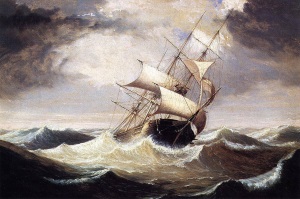 |
"Rough Seas Make Good
Sailors"
This experience of weathering the storm by righting Anglophile and quickly deploying a sea anchor would benefit me later in my Navy career. |
A story about a day sail with Laura in Duxbury
In the summer of 1974, we took the Anglophile to Duxbury, Massachusetts to visit Mary's family. Duxbury is located south of Boston and north of Plymouth.
 |
 |
We were able to anchor the Anglophile just off the coast of Duxbury. We kept the sails and related gear in the cuddy without concern that anyone would steal anything. We felt confident that no one would steal boating gear in a maritime community. Duxbury Bay was a tidal basin. At low tide, the Anglophile would be aground resting on her side. At high tide, there would be four to five feet of water under the centerboard. So, we would either swim out to the boat or take a row boat out. We would have about six hours of sailing time before it was too shallow as the tide ebbed.
One day Laura and I went sailing. It was a breezy day so the sailing was great. We were practicing coming about somewhere about where the X is indicated on the photo above. On one of the maneuvers, the boom grazed Laura's head knocking her glasses off her head and into the water. They were prescription glasses and rather expensive. I knew we would have to try to find the glasses. So, I took a bearing to a prominent point on the shoreline in the harbor and a second bearing to another prominent location about a ninety degree angle from the first point.
The next day, at low tide, we went to the first point on the shoreline and walked out on the sand in the reverse direction from the first bearing. Noone expected that we would find the glasses but we had to try. I actually thought that we had chance if the bearings were accurate. Sure enough, when we arrived at the point where the second bearing line matched up, the glasses were right there on the sand. The arms of the glasses had remained out from the frame which acted as an anchor so the glasses didn't move much with the tidal changes.
Many lessons learned from sailing Anglophile were helpful later in my navy career when
I was the Executive Officer of USS Saratoga CV-60 and Commanding Officer of USS Austin LPD-4!
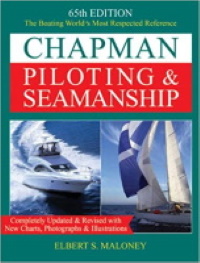 |
1. Safely handling a vessel in bad weather and rough seas 2. Kedging- I was able to save Anglophile from damaging the mast by being swept under the bridge between Hampton Roads and Chesapeake Bay during a strong ebb current. I struck the sails and deployed my light aluminum Danforth anchor. By kedging against the anchor. I was able to align the day sailor with the current and hold my position safely clear of the bridge until the ebb tide slackened. This was a valuable lesson that had applications as XO of Saratoga and CO Austin which I will describe later in the relevant chapters. 3. The Austin had significant structure above a flight deck that acted like a sail in strong winds. Understanding the sail area relative the center of gravity (center of lift) was very helpful when maneuvering the Austin. |
Code 521 Social Life
Our Code 521 group was a close
group. We worked well together at the
office and enjoyed each others company
with our wives socially. RADM Faulders and
Captain Bill Finneran attended most
parties with their wives. Our parties were
very informal and sometimes surprisingly
risque. Once at a costume party, Admiral
Faulders wore a Roman type robe with a
Gold stripe sash simulating his wide
Admiral stripe. Judy Boehmer asked him if
he knew what Admirals wore when streaking.
He told her, "Whatever they wanted to".
Our close social relationships helped keep
things "cool" at work when we were under
stress.
Chuck and Judy Boehmer were our best friend during our tour at CVOMNAVAIRLANT in Norfolk.
RADM FauldersChuck and Judy Boehmer were our best friend during our tour at CVOMNAVAIRLANT in Norfolk.
RADM Faulders was an exceptional individual. Sometimes staff officers are criticized as not being able to "See the Forrest for the Trees". RADM Faulers was not one of those officers. An example; I was in responsible at CNAL for monitoring the process of cutting up some of our A7Bs so that the manufacturer, LTV, could produce the two seat TA7s by installing a fuselage plug, a new canopy, and related wiring etc. I was also responsible for the configuration control of the two A7B squadrons which were going on their final deployment before transitioning to A7Es. Their deployment to the eastern Mediterranean meant that they might get involved in a shooting war. As a result, they were scheduled to get a very effective but expensive electronic warfare (EW) upgrade. Their A7Bs were scheduled for the TA7 transition. I discussed the need for this upgrade with RADM Fauders. I mentioned that the EW upgrade was necessary but that I was concerned that it was not very cost effective. His response to me was "Bo, f you were one of those A7B pilots, would you want that upgrade when the SA6 missiles were engaging you?". We did the EW upgrade and then cut up the A7Bs after deployment!
CNAL 521 Fitness Reports
This is the first fitness report I received as the A7 Class Desk Officer.
As you can see, it is a complete disaster. It was the first 5% fitness report I received in my naval career.
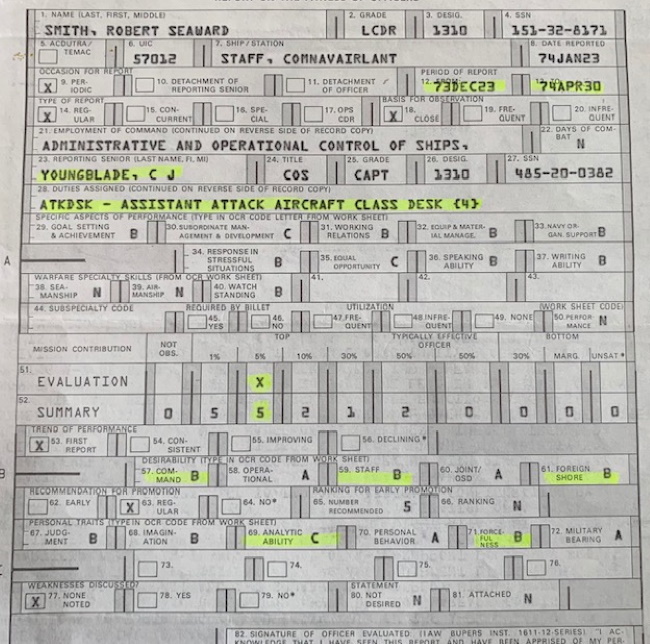 |
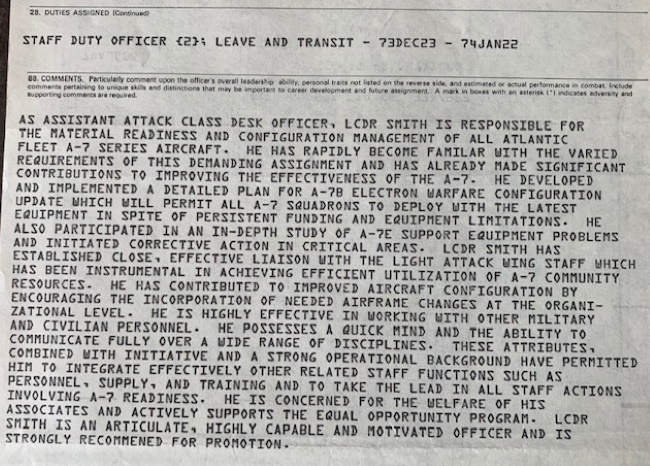 I really don't understand this fitness report. I thought I was doing an excellent job. Certainly, I don't think I deserved a "pack minus" report. Perhaps it was because I was a 1300 aviator working with a group primarily AEDOs (Aeronautical Engineering Duty Officers). The B command grade is especially concerning. I am surprised that Captain Youngblade would sign this without discussing it with me. I should have made a statement (Blocks 80 and 81) |
This is the second (last) first fitness report I received as the A7 Class Desk Officer.
I doubt if the command select and promotion boards thought that this one made up for the first one because it was a one of one report?
But anmazingly, I screened for command of a fleet squaron as a LCDR!
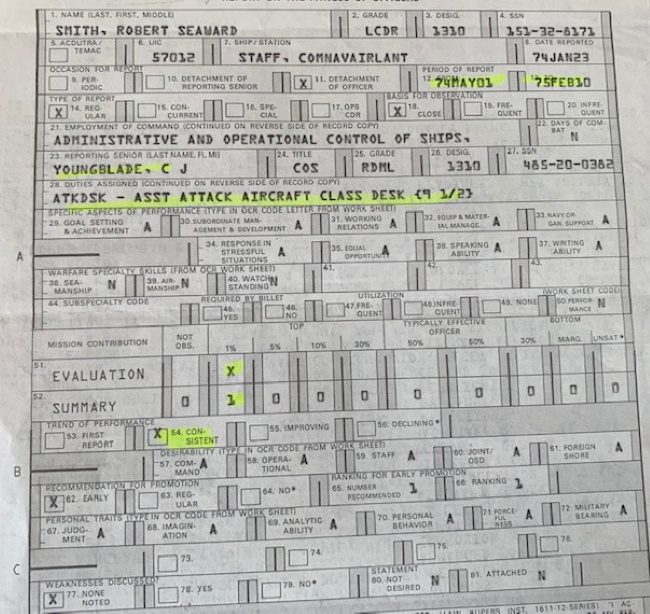 |
 This report is
certainly much better. But it is a one of one report
and doesn't show if I made progress in the group I
was compared to in the first report
|
An Interesting Flight
My flights during the month of December, 1974 changed the direction of my Navy career. On December 5th, I flew a VA-86 A7C aircraft from NAS Cecil to the west coast for an interview Admiral Maurice F. Weisner, Commander of the Pacific Fleet in Hawaii. Admiral Weisner had flown to San Diego to meet with me and LCDR Brent Bennett about being assigned as his Aide and Flag Lieutenant.
 |
Admiral Weisner was Commander of the Pacific Fleet at the time of our interview. Brent Bennett was a west coast A7 pilot with combat experience similar to mine. But, he was nuclear qualified. I was very flattered that I was considered for the job but was not expecting that I would get it. |
I returned o Norfolk to learn that Brent Bennett had won the job. But I was shocked to learn that I was being interviewed for two jobs. VADM Howard E. Greer was on Admiral Weisner's staff and was due to rotate as VADM Michaelis relief at COMNAVAITLANT in January 1975. Apparently Admiral Weisner gave VADM Greer a thumbs up on me and I was moved from my job as the A7 Class Desk Officer to be VADM Greer's Aide and Flag Lieutenant.
Aide and Flag Lieutenant
(January 1975-February 1976)
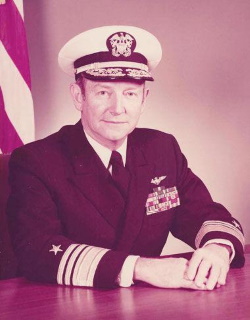 VADM
Howard E. Greer
COMNAVAIRLANT |
VADM
Howard E. Greer was born in Tyler, Texas November 21st, 1921, Graduated from the US Naval Academy in 1943, In WW2 (1943), VADM Greer served on the USS Princeton during the Battles of Tarawa and the Philippines He was designated a Naval Aviator in 1945 He served in numerous fighter squadrons. Commanded VF-64 from 1957-1958 Commanding Officer of USS Hancock CVA-19 Commander Carrier Group 10 Commander Sixth Fleet Commander Naval Air Reserve Force Commander Carrier Division Three from 1972-1974 overseeing Operations Linebacker One including the mining of Haiphong Harbor in the fall of 1972 COMNAVAIRLANT- VADM Greer died November 23rd, 2015 |
 LCDR
Robert S Smith
Aide and Flag Lt. |
I relieved Kevin Delaney as the
Admiral's Aide sometime in January, 1975.
In addition to me, the office staff
consisted of CDR John Pagonelli who was
the Flag Secretary, a very sharp Third
Class female Yeoman (The Admiral's
Yeoman), an E3/E4 who was the Admiral's
driver, and another enlisted man who had
various duties. The Admiral's
speechwriter, CDR John Barry was also a
member of the staff but he worked out of
another office.
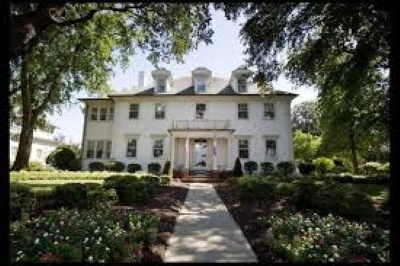 |
Admiral
Greer and his wife Suzanne lived in
the Connecticut House which was one
of the stately houses on Admirals
Row on Dilingham Blvd on the Naval
Station. In those days, the Navy
authorized flag officers to have
"stewards" assigned to help out at
the official quarters. The stewards
cleaned the house, cooked and served
the meals, and worked on the
grounds. VADM Greer was very
interested in flowers, bushes, and
trees so he kept the stewards busy
with grounds upgrades and
maintenance. Most
of the
stewards were
from the
Philippines. I would regularly stop by and see if Suzane had any problems that I could help her with. I was also expected to be by the admiral's side during all official functions at the house. This was a challenging task as I had to get to know the regular guests well enough to know their "peculiarities". |
Admiral Greer and Me
My relationship with Admiral Greer was outstanding. One of the first things he told me was that my role didn't involve stuff like handling bags. The driver or the other enlisted man would take care of that sort of stuff. I would be carrying his briefcase so that he could be return salutes and handshakes etc. In addition, he knew that I had been selected to command an A7 squadron following this tour. He tried to make sure that I had time to fly the A7s at Cecil field as often as possible.
Flight Time
January 1975- I flew 4 flights (8.4 flight hours)
January 27th- VC-2 in Norfolk flew me to Cecil in a a TA4
January 27th- I flew a VA-82 A7C from Cecil to NBE
January 30th- I flew that same VA-82 A7C back from NBE to Cecil (Probably a weekend cross country!
January 30th- VA-45 flew me back to Norfolk in a TA4.
I didn't get any flight time in February, March or, April. I was very busy getting to know how to do my responsibilities as the Aide and Flag Lieutenant
May 1975- I flew four flights (12.1 flight hours)
May 15th- I flew a VA-105 A7E from Oceana to Cecil.
May 18th- I flew a VA-46 A7E from Cecil to Oceana
May 22nd- I logged 4 hours (2.0 first pilot time. 2.0 hours co-pilot time) in a VP-10 P3B from NAS Keflavik, Iceland to NAS Rota Spain (see below)
May 29th- I flew a VA-174 A7C on a local flight at from NAS Oceana
My Transition to Being an Aide and Flag Lt was Interesting
When
someone
entered the
office they
faced the
Admiral's
Yeoman's desk.
To the left
was my desk
next to the
Admiral's
office
door.
John
Paganelli's
desk was off
to the right.
The driver
hung out in
another space
next to the
main office.
There was a
nice quest
chair in front
of my desk.
There were
several other
guest chairs
next to the
wall in front
of John
Paganeli's
desk. John's
primary job
was to
research
questions
asked by the
admiral and
coordinate the
admiral's
schedule with
the Admiral's
Yeoman and
John Barry,
the speech
writer. My job
was to
accompany the
admiral when
he left the
building,
attend to
personal items
he asked me to
take care of
including
running
interference
with his wife
Suzanne, and
to accompany
him on all of
his trips to
the various
COMNAVAIRLANT
activities.
VADM Greer was from Tyler Texas. His persona was low key and friendly. He was exceptionally intelligent but gave the impression that he was just a Texan doing his job. When he was upset about something, he rarely showed his anger. But, I learned to tell when he was "pissed off" because his jaw muscles would tighten. He would not normally come in to the office until after 0800. Of course, those of us who worked for him would arrive about 0600 to be sure we were prepared for the day. There we some days, we had to learn to be ready for.
VADM Greer was from Tyler Texas. His persona was low key and friendly. He was exceptionally intelligent but gave the impression that he was just a Texan doing his job. When he was upset about something, he rarely showed his anger. But, I learned to tell when he was "pissed off" because his jaw muscles would tighten. He would not normally come in to the office until after 0800. Of course, those of us who worked for him would arrive about 0600 to be sure we were prepared for the day. There we some days, we had to learn to be ready for.
Admiral Issac C. Kidd Jr.
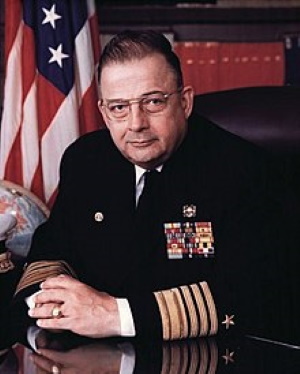 |
Admiral Issac C. Kidd Jr. CINCLANT- Commander In Chief Atlantic CINCLANTFLT- Commander In Chief Atlantic Fleet SACLANT- Supreme Allied Commander NATO Atlantic Fleet (Basically the Gorilla in the Room in the Navy in Norfolk). His father, Issac C. Kidd Senior was killed on the bridge of the USS Arizona on December 7th, 1941 |
ADMIRAL
Kidd
would
occasionally
stop by to pay
a short visit
with VADM
Greer on his
way from the
Flag Quarters
to his office
at
CINCLANT/CINKLANTFLT
off Hampton
Blvd. The only
problem was
that he would
stop by about
0700 before
VADM Greer had
arrived. It
happened often
enough that we
were prepared
for him
whenever he
came by. We
had his
coffee,
cigarettes,
and ash tray
ready for him.
While he was
waiting, he
would chat
with everyone
in the office.
He was
especially
interested in
talking with
the secretary
who was a
female Yeoman
Third Class
Petty Officer.
This was as
critical
period of time
when women
were beginning
to increase in
numbers and
were being
assigned to
some fleet
units. He
occasionally
sat in the
visitor's
chair in front
of my desk. I
was honored to
have a
discussion
with probably
one of the
most important
flag officer
in the Navy at
the time. He
always seemed
pleased to be
able to talk
with us and
didn't seem
miffed that
VADM Greer
wasn't in the
office when he
showed up. His
visits were
always a
surprise of
course, no one
told us he was
coming.
Another
Admiral Issac
Kid Story
Remember
that I
mentioned that
I thought
Admiral Kidd
was one of the
most important
flag officers
in the Navy at
the time. The
story I'm
about to
relate is
relevant